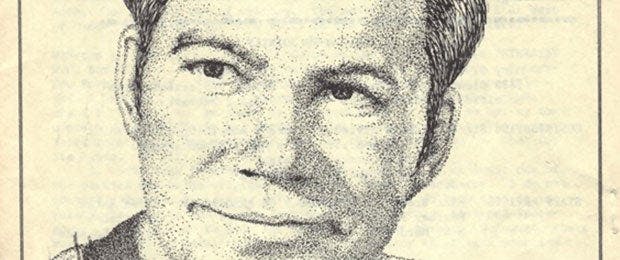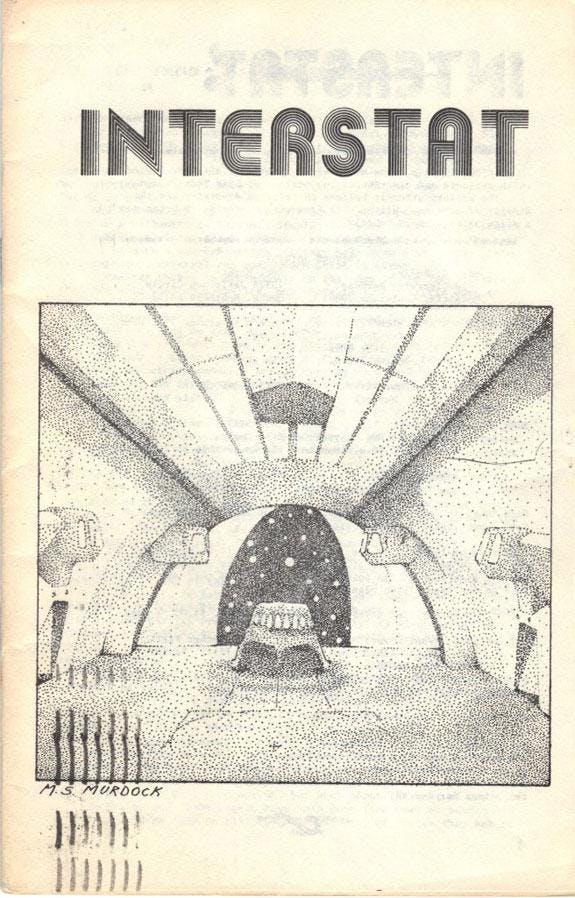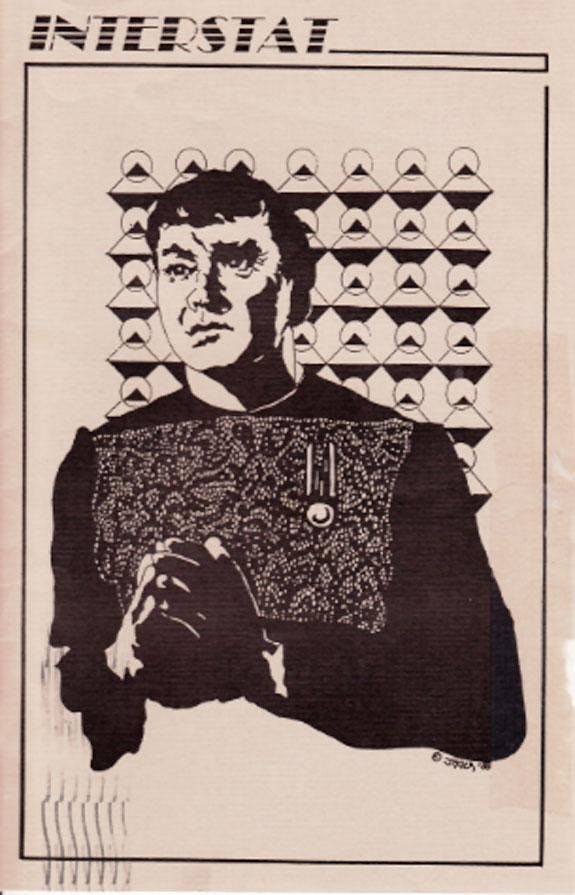Published Jun 6, 2013
Remembering the Trek Letterzine, Interstat
Jefferies Tubes #7: Remembering the Trek Letterzine, Interstat

“Intersat? That's been out of use for two centuries.” Uhura, “The Terratin Incident,” Star Trek: The Animated SeriesThis month, as we crawl around the U.S.S. Enterprise’s Jefferies Tubes, our palm beacons shine a light on arguably the most interactive and perhaps most important Star Trek fanzine/letterzine ever: Interstat.

Estimates are that somewhere between 140 and 200 billion emails are sent per day, and that young persons, on average, send nearly 60 texts per day. In a world of instant communication – of email, texting, instant messaging, Facebook, and discussion boards – it may be difficult to remember back to the time just a few short decades ago when this kind of interaction was the stuff of science fiction and dreams. The lack of instant communication, however, did not hamper interaction. It just slowed it. Indeed, the famous letter-writing campaigns to save Star Trek or to ask President Gerald Ford to name the first space shuttle Enterprise were conducted by letter and old-fashioned networking. There were vibrant debates and discussions before email and discussion boards taking place in letter columns of magazines, both official publications like The Official Star Trek Fan Club Magazine (later the Communicator) and in fanzines/letterzines such as The Halkan Council.

Chief among these letterzines for fan interactivity was Interstat. Published and edited originally by fans Teri Meyer and Mary G. Buser, Interstat was named, despite the spelling difference of an extra “t,” for the reference to intersat radio in the animated episode “The Terratin Incident.” The first issue of Interstat was published November 1977, and with an initial cost of about 50 cents per issue. The letterzine would run an amazing 152 issues until 1991.
Interstat’s format mostly consisted of letters from fans sharing their thoughts and opinions. There were a few regular columns, including “It’s Not a Rumor Anymore,” by Kay Johnson, who would dispel myths about the production of the films, and “Book Barn,” by Cathy Strand, that kept fans in the know about Star Trek publications. The bulk of Interstat was letters, accompanied by the artwork of fan artists such as M.S. Murdock and Vel Jaeger. Some letters were written by familiar names, including Leslie Fish (a famous filksinger who wrote “Banned from Argo”), Susan Sackett (Gene Roddenberry’s assistant) and Bjo Trimble. The conversations generated by letters from a previous issue would be continued and answered in the next issues, much like how a discussion board works today. This allowed for some detailed and fervent debates. During its 14 years, Interstat would cause both controversy and commiseration. For example, many of the letters through the entire run of Interstat, and especially the earlier issues, were about whether fans had the right to rewrite established Star Trek characters in their own image. Debates included the nature of copyright law and respecting canon. The debate occurring in fandom as to the real nature of Kirk and Spock’s relationship, as symbolized by the letters from Interstat, became so fervent that Gene Roddenberry utilized Admiral Kirk’s footnotes in his excellent novelization to Star Trek: The Motion Picture to answer the question. Suffice it say that not all letters in Interstat practiced IDIC when disagreeing with fellow fans. For example, there was a string of letters through several issues beginning in 1978 about the behavior of some fans at an Atlanta convention. Reading the letters of the fans involved was much like experiencing a soap opera.

There were, however, many other excellent letters with fans offering their art, critiques, ideas, and hopes for Star Trek. It is, if you forgive us, “fascinating” to read the thoughts of fans during the pioneering days of being a Trekkie/Trekker, especially the reactions to news about the first Star Trek movies and comparisons of Star Wars to Star Trek. One reader was Harve Bennett, producer of Star Trek movies 2 through 5, and writer or cowriter of Star Trek III and IV. Bennett respected fan opinions and read fanzines and letterzines to get a feeling for what made Star Trek popular during production of The Wrath of Khan. The April 1981 issue of Interstat includes a thank you letter from Bennett for receiving sample issues, and he wrote at least one more letter to Interstat. Listening to fans through their publications was something that Gene Roddenberry and Harve Bennett shared while producing their respective versions of Trek.In the episode “The Terratin Incident,” the point is made that intersat radio was a thing of the past, replaced by more efficient forms of communication. Appropriately, the same could be said of the letterzine Interstat named for this technology. Paper magazines are disappearing in favor of online information. Letter columns have been replaced by discussion boards and instant messaging. Yet, like the crew of the Enterprise in the animated adventure, it is important to remember past forms of communication. Perusing the pages of Interstat is time travel without the slinging around the sun.Those issues say much about us as fans then, and now.
______________________________
Maria Jose and John Tenuto are both sociology professors at the College of Lake County in Grayslake, Illinois, specializing in popular culture and subculture studies. The Tenutos have conducted extensive research on the history of Star Trek, and have presented at venues such as Creation Conventions and the St. Louis Science Center. They have written for the official Star Trek Magazine and their extensive collection of Star Trek items has been featured in SFX Magazine. Their theory about the “20-Year Nostalgia Cycle” and research on Star Trek fans has been featured on WGN News, BBC Radio, and in the documentary The Force Among Us. They recently researched all known paperwork from the making of the classic episode "Space Seed" and are excited to be sharing some previously unreported information about Khan's first adventure with fellow fans. Contact the Tenutos at jtenuto@clcillinois.edu or mjtenuto@clcillinois.edu.
